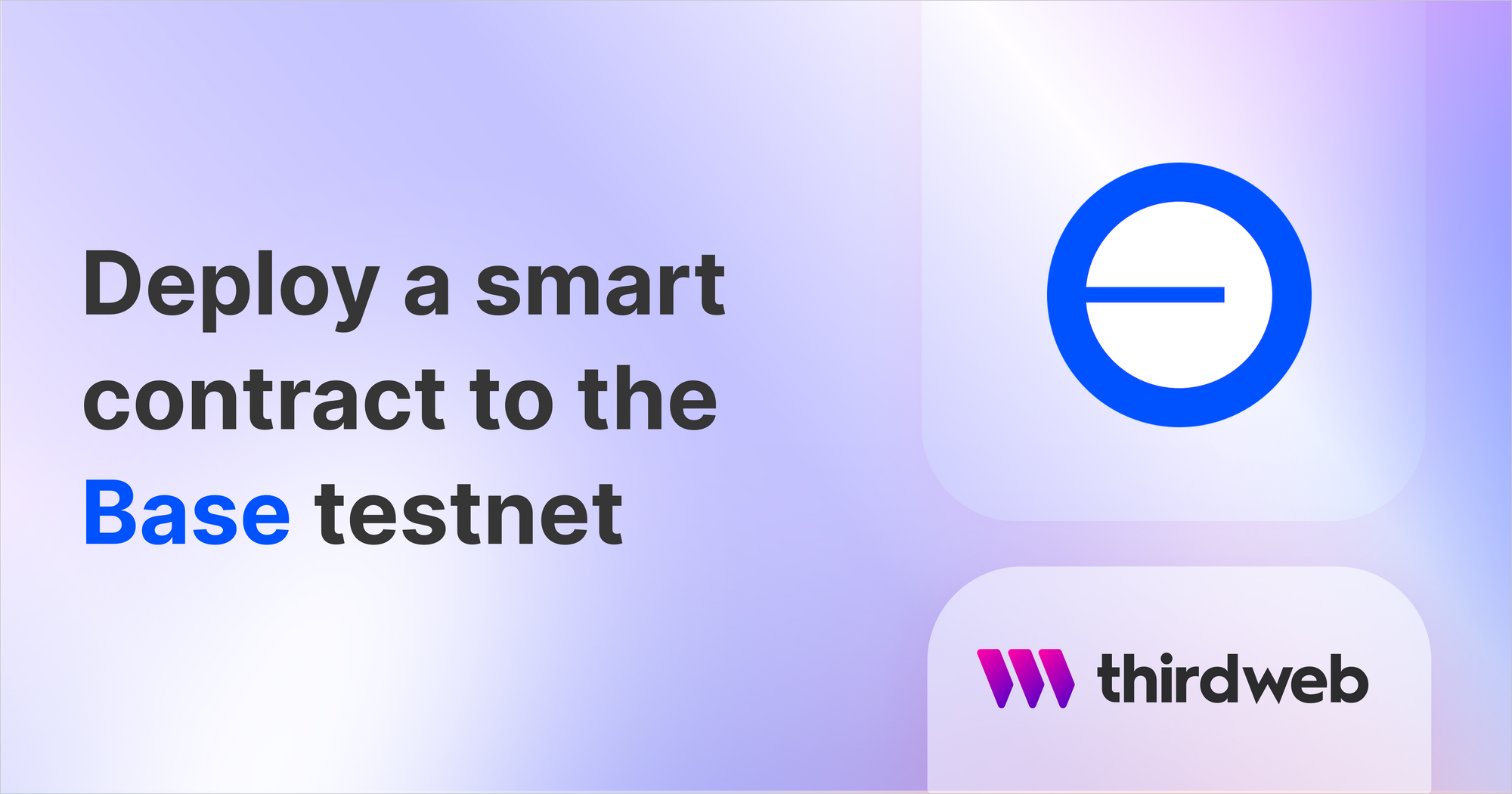What is the Base Blockchain? Coinbase L2 Explained

Dating back to the “The Coinbase Secret Master Plan," a blog post written by Brian Armstrong (Founder & CEO) in 2016, Coinbase's goal is to create an open financial system that increases economic freedom globally.
Today, they've announced their next step in that journey by launching the Base blockchain: a platform for decentralized apps to scale efficiently & bring 1B+ users into the global crypto economy.
In this blog post, we're going to demystify what Base is, why Coinbase built its own blockchain, and what it means for the future of web3.
What is Base (by Coinbase)?

Base is a new Ethereum-based blockchain, built by Coinbase as a Layer 2 (L2) network to offer a secure, low-cost, developer-friendly way to build decentralized applications (or dApps).
As a Layer 2 network built on top of the Ethereum blockchain, Base is an EVM-compatible chain that uses Optimism’s OP Stack under the hood — aiming to become a standard, modular, rollup agnostic Superchain. Base will be incubated inside of Coinbase & become progressively more decentralized over time.
Like other Layer 2 networks, Base is built to address the scalability issues of the Ethereum mainnet, like high gas fees and throughput speed (transactions per second). Base will serve as both a home for Coinbase’s on-chain products, and an open ecosystem for anyone to build in.
But why is Coinbase building a new blockchain, instead of using existing L2 networks? Let's break it down.
What’s different about Base?
Coinbase built Base to be one of the best places for developers to build on-chain — leveraging the company’s last decade of experience building crypto products to create a user-friendly, trusted, and secure blockchain to build web3 apps.
In doing so, they’ve leveraged a number of existing blockchain technologies to create what they refer to as a “standard, modular, rollup agnostic Superchain.” Base is:
- Built on Ethereum: As a Layer 2 network, Base is built on the Ethereum blockchain to leverage its advantages in security and decentralization, while also solving for Ethereum’s scalability issues — such low throughput and high gas fees — that make mass adoption of web3 apps more difficult. Ethereum’s security ensures trust when onramping into Base from Coinbase, Ethereum L1, and other interoperable chains.
- Powered by Coinbase: With Base, developers are able to leverage Coinbase’s products, user base, and tools as they build web3 apps — with streamlined Coinbase product integration, simple fiat onramps, and access to Coinbase’s ecosystem of 110M+ verified users and $80 billion in assets on the Coinbase platform.
- Feature-rich and affordable platform: As an EVM compatible blockchain with low transaction fees, Base makes web3 more accessible to all developers — with APIs to enable gasless transactions and account abstraction for your dApps, as well as easy-to-use bridges for multi-chain applications.
- Open and decentralized: Base strives to be a decentralized, permissionless platform — using Optimism’s open-source OP Stack under the hood and building a vibrant community of like-minded developers that will push web3 forward.
Base vs. Polygon vs. Arbitrum vs. Other Layer 2 (L2) Networks: Which is best?
As noted in Coinbase’s Meet Base post, the company has considered launching a chain two times before — deciding no both times, with the thesis that a single L2 would create a monopoly, emerging as “dominant” and absorb all activity.
But after talking to teams building on Ethereum L2, the Coinbase team emerged with a new thesis: rather than "picking the right L2" to build on, Coinbase believes that there will be many L2s with significant activity, serving as “hubs” for different ecosystems — and that they would gradually become more interoperable until they form a “mesh” or “superchain” that jointly scales Ethereum.
Every existing Layer 2 network has its pros and cons — and in creating a more decentralized crypto economy, Coinbase's aim is for Base to become interoperable with other EVM-compatible chains, creating a greater Ethereum ecosystem.
Base FAQs: Frequently Asked Questions
Why is Base building on Ethereum?
Ethereum, and EVM more broadly, have the significant majority of developers, activity, and liquidity. This is because Ethereum has established itself as one of the most mature, secure, and decentralized blockchains.
Learn more about why Coinbase built Base to be EVM-compatible, and what the advantages of EVM-compatible blockchains are.
When will Base Mainnet be released?
Currently, Base is only available as a testnet — fully avaiable and ready for anyone to build web3 apps on. Coinbase will be announcing their roadmap to mainnet and providing more developer resources to build on Base soon.
For the time being, you can find more info on the Base website and docs.
Is Base decentralized?
Coinbase is incubating Base inside of the company initially, progressively making the chain more decentralized over time. Base plans to progress from a Stage 0 to Stage 1 rollup in 2023, and a Stage 2 rollup in 2024.
Is Base going to release a network token?
Coinbase currently has no plans to issue a network token for the Base blockchain.
What is Base’s native currency?
Base’s native currency is Ethereum (ETH). On the Base testnet, transactions are made using Base Goerli Ethereum (ETH) — get more info on how to get testnet funds.
How do you build on Base?
The Base testnet is now available and ready to use! Anyone can create smart contracts and build web3 applications on top of the Base testnet, so that they will be ready to deploy on the Base Mainnet when it comes around.
As a launch partner, thirdweb provides support for the Base Testnet (and will do so for Base Mainnet) since launch. Any developer can use thirdweb’s pre-built & customizable smart contracts, blockchain SDKs, and web3 tools to build decentralized apps for free.
Learn more about how to start building & deploy a smart contract on Base:

Concluding thoughts: Build on Base
Base is an exciting step forward in fulfilling the web3 vision & making the blockchain more accessible to all. Like other EVM-compatible blockchains and Layer 2 networks, Base aims to make building on-chain faster, easier, and cheaper — while maintaining the security & decentralization advantages of Ethereum.
By reducing gas fees and increasing the chain’s throughput, Base strives to create a more open & free crypto economy, enabling all developers to build scalable web3 apps that are better-positioned for mass adoption.
We hope this blog post has helped you understand what Base is, why Coinbase built its own blockchain, and what it means for the future of web3.
If you want to learn more about how to start building on Base, read our Base guide and deploy smart contracts to Base in minutes! And if you have any questions, join 32,000+ other builders in our Discord.

